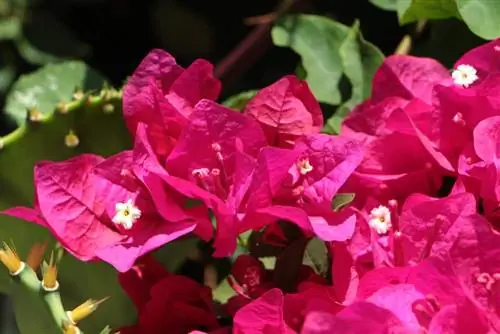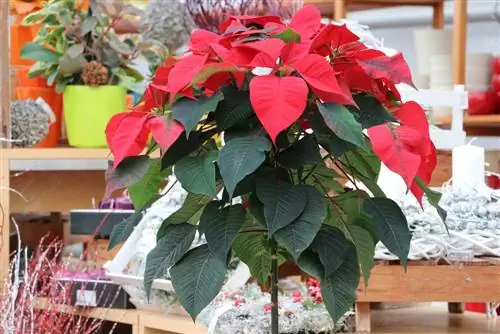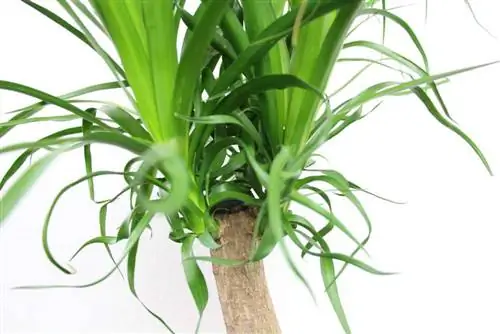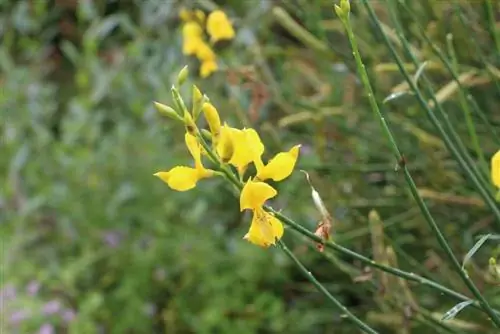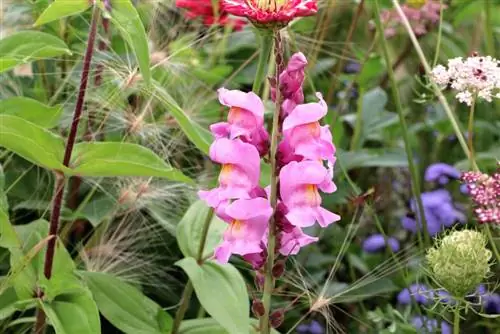- Author admin [email protected].
- Public 2023-12-17 03:39.
- Last modified 2025-01-24 12:45.
The bougainvillea belongs to the miracle flower family (Nyctaginaceae) and is also colloquially known as the triplet flower. The distinctive climbing shrub blooms almost all summer long, but originally comes from tropical climes. This is why it is very sensitive to frost and is not hardy in these latitudes. For this reason, the plant can only be kept in a pot and there are some important aspects to consider when overwintering.
Preparing for wintering
Even in regions with particularly mild temperatures, overwintering in the garden is not possible. Even a single night with slightly sub-zero temperatures can cause the affected plant to die. So that the bougainvillea is not unnecessarily stressed and damaged when moving to its winter quarters, it should change its location before the first frosty nights. Due to the lack of winter hardiness, it is not advisable to plant the triplet flower in the garden in summer. However, it is possible to bury the planter in the garden so that the shrub can be dug out relatively quickly and without damage. Afterwards, a stress-free move to a frost-free winter quarters is possible.
- Ideally plant in mobile pots
- This makes it easy to transport
- Ensure a seamless transition into hibernation
- Let the substrate dry thoroughly first
- Afterwards the leaves wither
- Plant loses its leaves as a result
- Pruning is advisable before moving to winter quarters
- Never plant directly in the garden
- Digging up causes damage to the roots
- The subsequent recovery phase often lasts several weeks
Pruning before winter rest
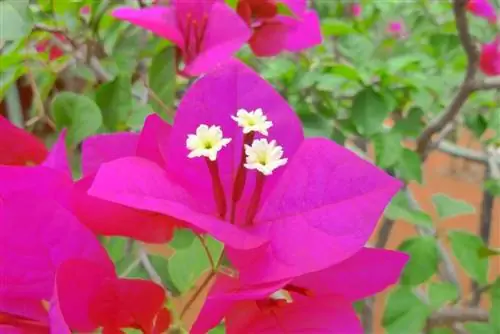
It is advisable to prune the bougainvillea before overwintering. This pruning can also be more severe if the plant grew strongly in the previous growing season. Pruning stimulates flower production the following year and the plant grows he althier. The distinctive flowers form exclusively on the short shoots, which grow in spring.
- Cut back about two thirds
- In the case of fast-growing specimens even up to half
- Remove young shoots including wilted flowers
- Pruning supports new growth
- If there is little growth, wait until next spring before cutting back
Winter quarters
Ideally, the plant is cultivated in a temperate winter garden where it can overwinter without any problems. However, since most gardens do not have a winter garden, a move to suitable winter quarters is necessary. When temperatures drop steadily in the fall, it's time for the bougainvillea to move. However, there are differences in overwintering, depending on whether it is a single species or a hybrid. Due to the lack of light in winter, the triple flower loses a large part of its leaves. This process is completely normal since they no longer photosynthesize in the winter months. In order to produce beautiful flowers again next year, the plant depends on hibernation, which should be observed for a few winter months.
- If temperatures are around zero degrees, move to winter quarters
- The ideal conditions for wintering are frost-free but still cold
- Optimal temperature values are between 5-10° C
- If the leaves are completely lost, even cooler and darker locations are possible
- Hybrids usually do not need a winter break
- However, these also have to overwinter frost-free
- Bright places are ideal, with temperatures between 12-17° C
- Hybrids sometimes also bloom in the winter months
Care during wintering
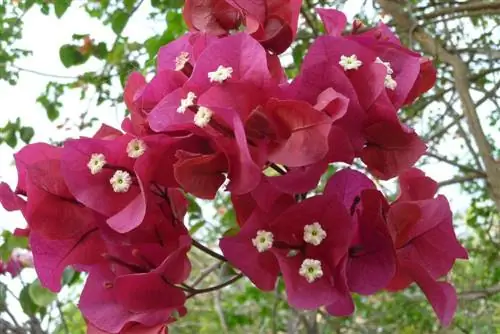
During the winter, the bougainvillea should be checked periodically in order to resolve any problems at an early stage. Watering is still necessary, although the amount of watering should depend on the size of the respective bucket and the prevailing temperature values. If there is a prolonged drought in winter, the triplet flower completely loses its foliage and the subsequent flowering is delayed considerably. Therefore, the substrate should always be moist, but only slightly. In winter, the plant is particularly susceptible to mold, which is why it must not be given a breeding ground. If the triple flower forms shoots in the winter months, these should be removed. The attractive flowers develop exclusively on the shoots that form in spring. When the first leaves appear again, a significantly warmer location is possible.
- Water only a little in winter quarters
- It is usually sufficient to water gently once a month
- The cooler the winter quarters, the fewer watering units administer
- Do not keep the ball of soil too wet or let it dry out completely
- Avoid waterlogging as this leads to rot
- In the worst case scenario, the entire plant dies due to accumulated moisture
- Do not fertilize during wintering
- Check regularly for possible pest infestation
- Remove fallen leaves promptly
- Make it brighter and warmer again from February
- Then water and fertilize regularly again
- Ideally do this once a week
- Put outside again after the last night frosts
- A sheltered location on a south wall is optimal

